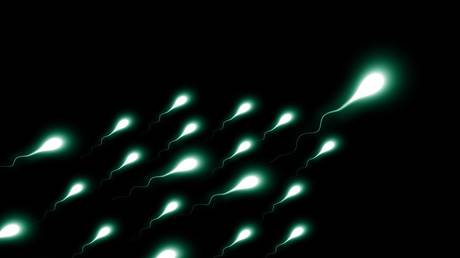
A new study from the Harvard GenderSci Lab challenges the rising panic over alleged precipitous drops in human sperm counts, most notably in Western society.
Recent studies claim a global decline in sperm counts, but especially in Western males, which can be attributed to certain classes of chemicals in our environment and food supply – in particular, phthalates. Phthalates are a class of chemical used to make plastics more durable and are ubiquitous in many societies around the world.
Concern about these chemicals and their apparent effect on not just sperm counts but also human fertility in general reached fever pitch online following the recent appearance of Dr. Shanna Swan on the Joe Rogan podcast.
However, in their new research, Harvard GenderSci Lab scientists dispute the evidence presented in the widely cited 2017 meta-analysis produced by Swan, Hagai Levine, and their colleagues.
Swan, a professor of environmental science and public health at the Icahn School of Medicine at the Mount Sinai medical school in New York City, claimed phthalates lower testosterone, shorten the anogenital distance (AGD), and decrease the size of male genitalia.
She measured the AGD of adult men, students in Rochester New York, against their sperm count. She found a two-inch average AGD among the study participants. However, she noted that men with an AGD of less than two inches were seven times more likely to have a sperm count in the sub-fertile range. This, she concluded, was a clear indication of the profound and potentially disastrous effect plastics and chemicals were having on humans.
The publicity Swan’s research garnered sparked fears online of a looming fertility crisis. As podcast host, comedian and MMA commentator Joe Rogan put it: “This one should scare the s*** out of people.”
But the Harvard GenderSci Lab researchers offer an alternative explanation of sperm count trends and suggest there is little, if any, cause for concern. They highlight a pre-existing wide variability in sperm count that is not necessarily the result of some outside influence in the human environment but is, instead, quite typical for the human species.
The team contends that a higher sperm count is not necessarily better, nor is it an indicator of better health, or a higher probability of fertility.
They also highlight several apparent logical fallacies and misinterpretations of old data within this particular niche area of research, including that sperm counts taken in Anglophone nations during studies conducted in the 1970s constituted some kind of optimum, when this was simply not the case.
The Harvard scientists also expressed concern about the conflation in some quarters of declining sperm counts with declining fertility, saying there was simply no evidence to support this claim.
Furthermore, the proposed interference mechanism for decreasing sperm counts as a result of chemicals in the environment isn’t supported by geographical and historical data on average population sperm counts, they say.
“Researchers must take care to weigh hypotheses against alternatives, and consider the language and narrative frames in which they present their work. In addition to its explanatory virtues, we argue that biovariability offers a more promising framework than does ‘sperm decline’ for attending to these imperatives,” the researchers conclude.
Like this story? Share it with a friend!




